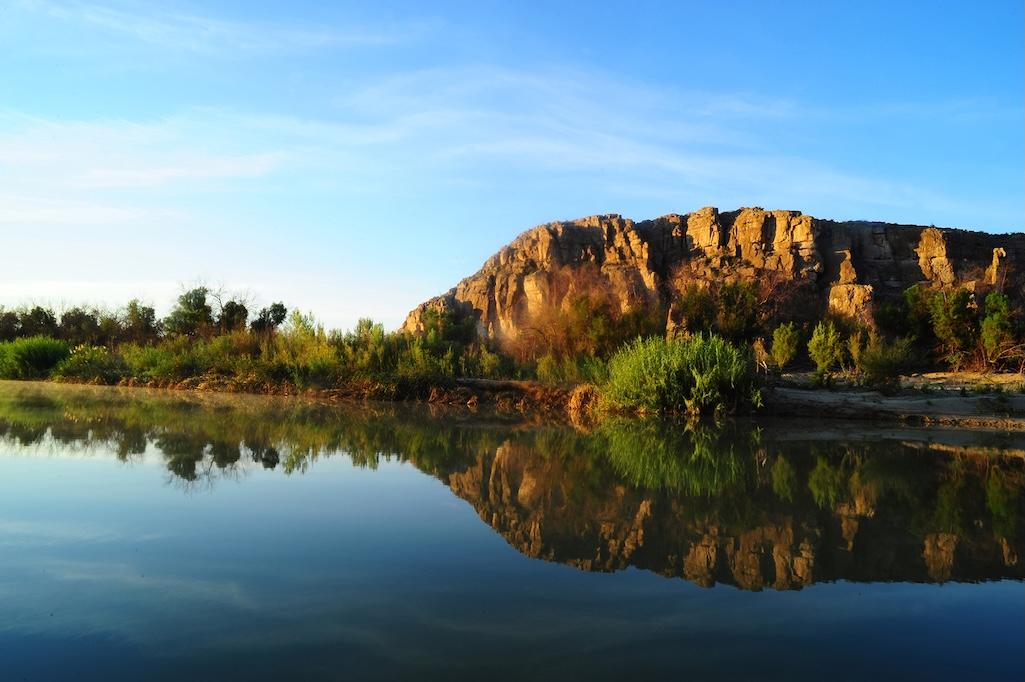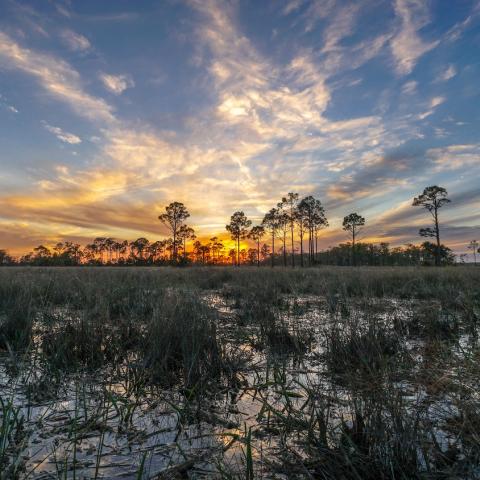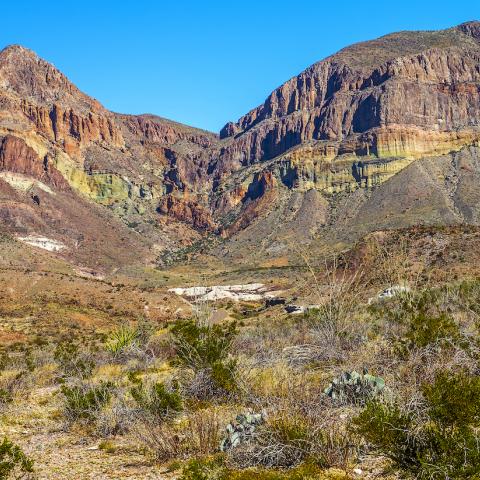
Army troops could be in Big Bend National Park to enhance border security/NPS file
Editor's note: This updates with U.S. Army troops confirmed in Big Bend National Park.
U.S. Army troops, supported with eight-wheeled Stryker armored vehicles, have been deployed inside Big Bend National Park to back up Border Patrol agents working to secure the border.
Thousands of troops with air and ground support have been sent into the Southwest to assist with border security in response to President Trump's January 22 order authorizing the Departments of Homeland Security, Justice, and State "to take all necessary action to immediately repel, repatriate, and remove illegal aliens across the southern border of the United States."
Part of the enhanced show of strength is in the Border Patrol's Big Bend Sector, which covers 165,154 square miles in Texas and Oklahoma and runs along 517 miles of Rio Grande River shoreline between the United States and Mexico. The sector encompasses the largest geographical area of any Border Patrol sector along the Southwest border. Nestled within it along the river is the national park.
"We are getting Army troops and even Texas National Guard guards that are being deputized to help us with our border patrol mission down there, because the extra eyes and surveillance and ability to respond helps us assist us with our border security mission," said Landon Hutchens, a public information officer with the Border Patrol in that sector. "This is part of the presidential order. And what it's led to, particular in El Paso (Texas), has led to a dramatic reduction in a number of illegal crossings."
What is unknown, and what concerns some national park advocates, is whether the troops' movements will be governed by any agreement or memorandum of understanding and whether they'd be bound by federal environmental laws, such as the National Environmental Protect Act or the Endangered Species Act, and other Park Service regulations designed to protect park resources.
While Hutchens told the Traveler from El Paso on Tuesday that "there is no necessity to have an agreement" with the National Park Service clearly stating any guidelines around the Army's actions inside the national park, the Park Service and the Border Patrol have long operated under an MOU inside Big Bend.
At Big Bend, officials confirmed troops were inside the park and added that, "we are cooperating to ensure minimal impacts to the park and our visitors. Visitors are still welcome to explore the park, and we do not anticipate impacts to park operations or visitor services at this time. We are actively monitoring the impact of border activities on park resources, visitors, and employees. The park has provided [Department of Defense] with information to minimize any impacts to the park and its visitors. At this point in time, DoD/TXNG are not engaging in any activity that requires additional authorizations from NPS."
According to former Big Bend Superintendent Bob Krumenaker, a 2006 memorandum between Homeland Security, Agriculture, and Interior has allowed the agencies to successfully deal with migrants coming north from Mexico.
"The MOU specifies that it is not 'intended to prevent' USBP from exercising emergency authorities to access lands including motorized off-road pursuit of suspected cross-border violators at any time, including in wilderness and wilderness study areas, based on the professional judgment of USBP personnel," Krumenaker last month told a House subcommittee considering legislation that would give the Border Patrol unfettered access across official wilderness, and potential wilderness, in Big Bend and Organ Pipe Cactus National Monument in an effort to reduce illegal immigration.
"The MOU requires that the Border Patrol respect wilderness constraints, except in cases of emergency, and even then they need to report back to the land management agency what happened and why," he added. "The MOU also requires that the land-management agency respond expeditiously to USBP requests for infrastructure or operations that would normally be prohibited, and not use wilderness as an excuse to automatically say no. Most importantly, the MOU directs that the Border Patrol and the land management agency work together at the lowest level possible to resolve differences. It further directs that the agencies respect, and to the maximum degree possible, honor each other’s mission."
The legislation proposed by U.S. Rep. Juan Ciscomani, R-Arizona, calls for nearly 600 of miles of "navigable" roads to be available within 10 miles of the US-Mexico border for the Border Patrol, local law enforcement, and Defense Department usage. It also would allow authorities to construct roads, install structures, and land aircraft in official wilderness.
Hutchens did not know whether there would be a need for the Army to go off-road in Big Bend with Stryker vehicles, noting there are a lot of paved roads in the park and Border Patrol agents also head out on foot or horseback into areas lacking roads.
"The primary purpose of the Stryker vehicles is to use their optics to provide force protection and mobility for agents and active-duty mercy personnel, and to use their surveillance," he said. "They have a very good electro-optic system for targeting. They can see miles and it's night vision capable with like night thermal imaging and things like that."
Mercy personnel are involved with rescues when needed, and might involve someone stranded in the desert or thrown into a river.
The Big Bend Sector has a relatively low incidence of illegal border crossings, according to the Border Patrol's statistics. For instance, in November there were 426 apprehensions, while in the El Paso, Texas, area there were 22,409. Numbers from the Big Bend Sector currently are in the single digits, said Hutchens.




 Support Essential Coverage of Essential Places
Support Essential Coverage of Essential Places






